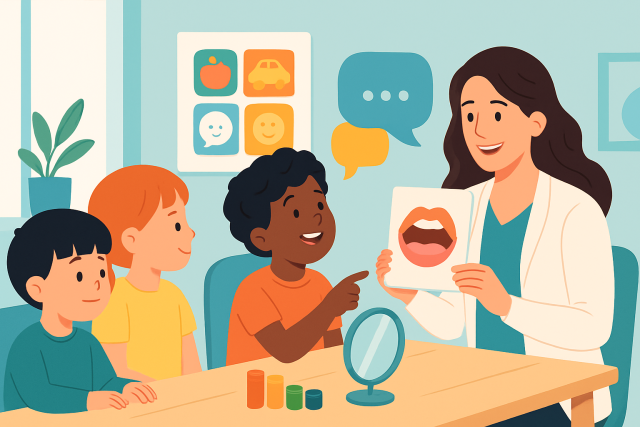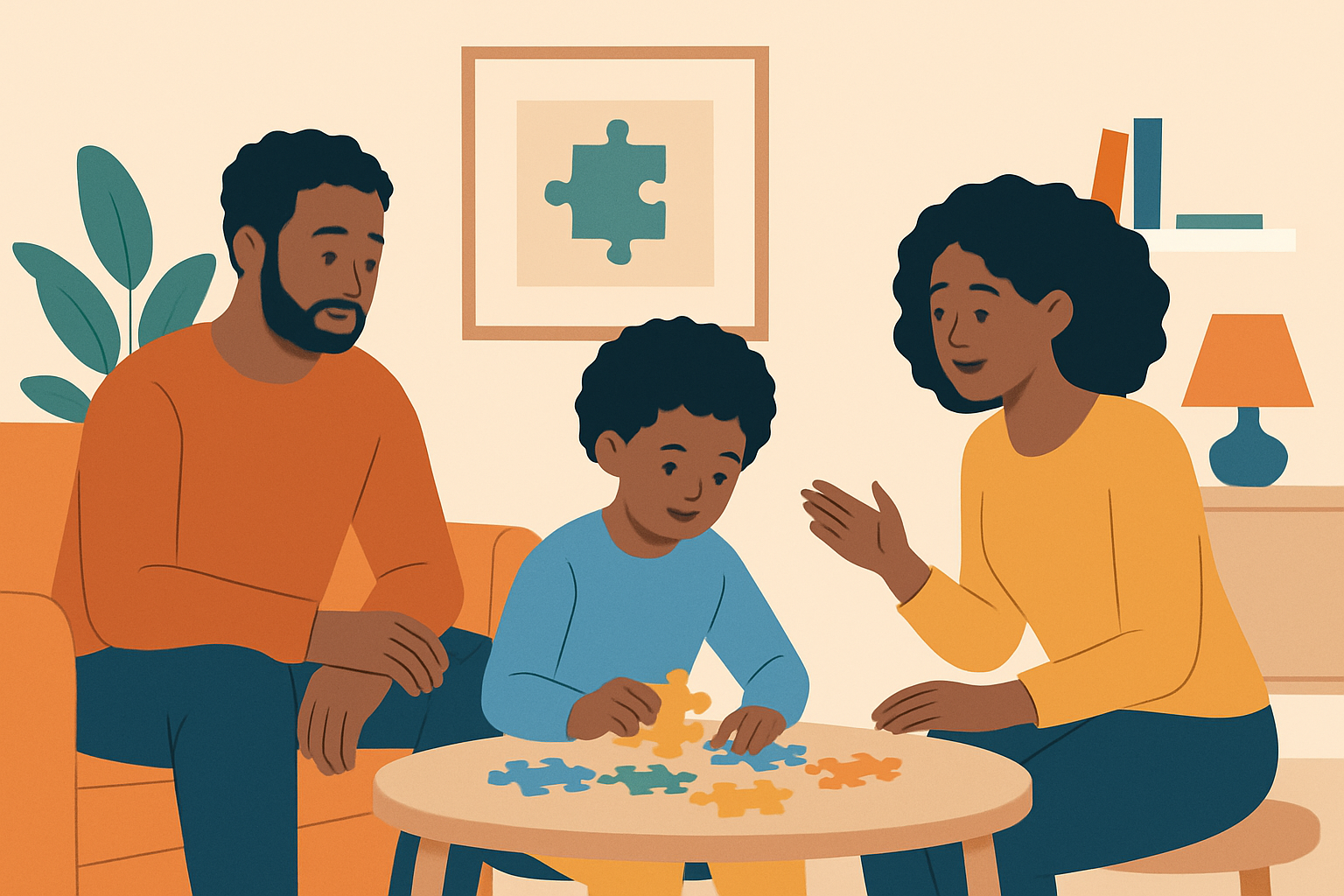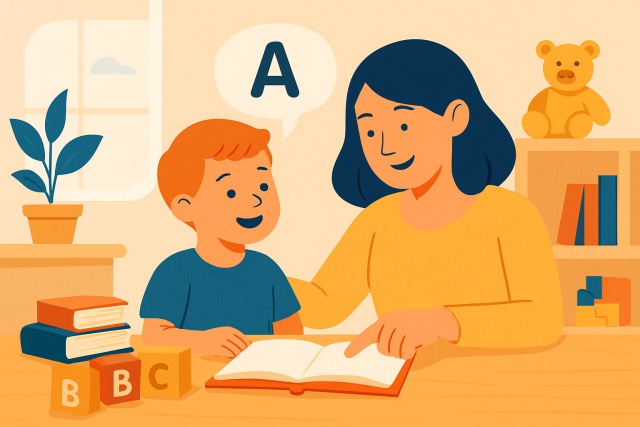
What Is a Speech Sound Disorder and How to Recognize It
Speech sound disorders affect clarity and communication. This article reveals what they are, how to...
Autism Spectrum Disorder (ASD) is a complex neurodevelopmental condition that encompasses different forms of autism, with a broad spectrum of symptoms and varying degrees of severity.
Autism Spectrum Disorder is a lifelong neurodevelopmental condition marked by challenges in social communication and interaction along with some restricted and repetitive behaviors. These behaviors can vary a lot from person to person. The term 'spectrum' is fitting because it captures the wide range of symptoms, abilities and hurdles that people with ASD might navigate.
The way we diagnose autism has turned around since it was first flagged in the 1940s. What used to be separate conditions—Autistic Disorder, Asperger's Syndrome and Pervasive Developmental Disorder-Not Otherwise Specified (PDD-NOS)—were all lumped together under DSM-IV. In 2013, the DSM-5 rolled them into one diagnosis called Autism Spectrum Disorder.
| Feature | DSM-IV Subtypes | DSM-5 Unified Diagnosis (ASD) |
|---|---|---|
| Diagnosis Categories | Autistic Disorder, Asperger’s Syndrome, PDD-NOS | Now bundled together under one umbrella diagnosis called autism spectrum — simplifying quite a bit |
| Language Development | Set apart by verbal abilities | Assessed on a sliding scale of severity, reflecting a richer picture |
| Social Interaction | Different flavors depending on the subtype | Takes center stage in the diagnosis, as you might expect |
| Behavioral Symptoms | Hinge largely on subtype | Broken down into levels of severity, giving a more nuanced view |
| Intellectual Disability | Treated as a separate issue | Recognized as often running alongside, but not defining, the diagnosis |
| Clinical Usage | Dictates eligibility for various services | Designed to offer more flexibility and allow for a truly tailored profile |
Autism shows up differently in every person yet there are some familiar patterns that help clinicians get a clearer picture and provide better support for those on the spectrum.
Classic autism typically makes its grand entrance in early childhood and brings noticeable hurdles in social communication and repetitive behaviors. There is also a strong craving for routine. Kids often have limited speech and find it tough to connect with others. They zero in on routines so intensely that they usually need quite a bit of support to navigate their world.
If you have ever come across Asperger's Syndrome, you might've noticed it is a bit of a mixed bag when it comes to traits. People with Asperger's often have a sharp eye for details and a knack for focusing deeply on their interests—sometimes a bit more than most of us do. Social interactions can be a bit like decoding a cryptic puzzle, with some struggling to catch on to the usual back-and-forth nuances. And while they might seem a little awkward at times, there’s a genuine passion and unique perspective that really shines through once you get to know them. It is not all straightforward, but that is part of what makes each story so interesting.
People with Asperger’s traits usually pack average to above-average intelligence and tend to have pretty strong verbal skills. Social interactions and nonverbal cues can be a bit of a tough nut to crack.
Nonverbal autism describes individuals who speak little or not at all. They often use other methods to get their message across like sign language, picture exchange systems or assistive technology to express their needs and feelings in ways that work best for them.
High-Functioning Autism usually points to individuals on the spectrum who have average or above-average smarts and verbal skills but still face challenges with social interaction, sensory processing and everyday adaptive skills. Many shine academically but struggle with emotional regulation, picking up on social cues and maintaining relationships. Support focuses on honing social skills, boosting executive functioning and managing sensory sensitivities.
Some people on the spectrum also face intellectual disabilities that affect their reasoning, problem-solving and day-to-day living skills.
Epilepsy often shows up alongside autism, affecting roughly 20 to 30 percent of individuals. Managing both conditions usually calls for a well-coordinated medical approach to keep seizures in check and help navigate the unique challenges that come with autism—factors that definitely shape the overall outlook.
For many individuals on the autism spectrum sensory processing challenges aren’t just a footnote—they’re front and center in how autism shows up. Sometimes it’s a bit like living in a world turned up to eleven with hypersensitivity causing strong reactions to sounds, lights or textures. Other times it’s more like the volume’s been turned down because hyposensitivity makes sensory input feel muted or faint. You’ll often see behaviors like rocking, spinning or touching things as a way to actively seek out sensory input—kind of like their own personalized playlist.
Autism can show up in many ways due to factors like genetics and the prenatal environment. Brain development and other medical conditions also play a role. These pieces come together to form the unique traits and hurdles each person experiences.
Diagnosing autism usually calls for a comprehensive look at behavioral assessments, detailed developmental histories and input from several specialists who each bring their own expertise to the table. Pinning down the exact type of autism often means paying close attention to the unique mix of symptom patterns and cognitive abilities. It also requires understanding communication styles to craft diagnostic and intervention plans that truly fit the individual.
| Diagnostic Tool | Purpose | Strengths | Limitations |
|---|---|---|---|
| ADOS (Autism Diagnostic Observation Schedule) | Structured observation of social and communication behaviors | Often hailed as the gold standard in ASD diagnosis, it strikes a nice balance between structure and flexibility, which is no small feat | Requires a trained clinician and can be quite time-consuming, so patience is key |
| ADI-R (Autism Diagnostic Interview-Revised) | Detailed interview with caregivers to assess developmental history | Offers an in-depth peek into developmental history, leaving no stone unturned | Can be a bit of a marathon and relies heavily on parent recall, so memories need to be sharp |
| CARS (Childhood Autism Rating Scale) | Rating scale to measure autism severity | Quick to administer and handy for screening, making it a useful first step | Less detailed and carries some subjective judgment, so it’s not the whole picture |
| SRS (Social Responsiveness Scale) | Questionnaire assessing social difficulties | Efficient for screening and adaptable across different ages, which is pretty convenient | Sometimes struggles to clearly separate ASD from other conditions, so take with a grain of salt |
| Sensory Profiles | Assesses patterns in sensory processing | Great for steering sensory-based interventions in the right direction | Not enough on its own to pin down an ASD diagnosis |
Clinicians often find themselves in a bit of a puzzle when it comes to distinguishing between different forms of autism, since symptoms tend to overlap and can look quite different from one person to another.
Support strategies for autism can vary quite a bit depending on each person's unique blend of needs, strengths and challenges. The most successful approaches usually weave together therapies, educational tweaks and assistive technologies. They all aim at boosting communication, social skills, independence and the overall quality of life.
Families play a central role in spotting their loved ones’ unique needs and championing the right services. They nurture their strengths and create supportive structured home environments that truly help foster growth and independence.

Research is making steady progress in pinpointing different forms of autism through genetic, neurological and behavioral markers which could pave the way for more personalized treatments tailored to individual needs. Discoveries in biomarkers might be the key to earlier and more accurate diagnoses and give families a head start. Meanwhile, new approaches like neurofeedback, gene editing and digital tools are opening up some genuinely promising treatment options that were not on the radar not so long ago.
"Getting to grips with the vast spectrum of experiences within autism is absolutely key when it comes to crafting treatments that truly respect each individual's unique strengths and needs," says Dr. Emily Harper, Autism Research Specialist. It’s a bit like tailoring a suit—one size definitely does not fit all.

Speech sound disorders affect clarity and communication. This article reveals what they are, how to...

Discover the fascinating world of autism savant skills—remarkable talents arising alongside autism—a...

Language processing disorder impacts how children understand and use language. Learn to recognize ea...

Contempt is a toxic emotion that can erode love and respect in relationships. Discover what contempt...